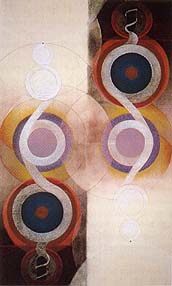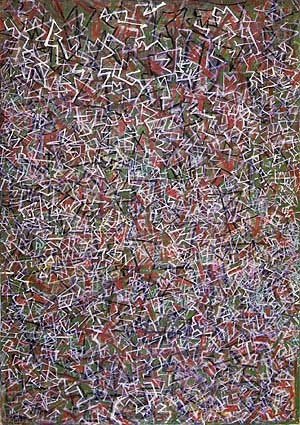"It is a landscape in a minor key. A sketchy panorama where objects, both organic and inorganic, lack well-defined edges and tend to melt together in a silver-green blur. Great Islands of craggy rock arch abruptly up out of the flats, and at the sunrise and moonrise these outcroppings are frequently tangled in mist. Eagles nest on the island crowns and blue herons flap through the veils from slough to slough. It is a poetic setting, one which suggests inner meanings and invisible connections. The effect is distinctly Chinese. A visitor experiences the feeling that he has been pulled into a Sung dynasty painting, perhaps before the intense wisps of mineral pigment have dried upon the silk. From almost any vantage point, there are expanses of monochrome worthy of the brushes of Mi Fei or Kuo Hsi.
The Skagit Valley, in fact, inspired a school of neo-Chinese painters. In the Forties, Mark Tobey, Morris Graves and their gray-on-gray disciples turned their backs on cubist composition and European color and using the shapes and shades of this misty terrain as a springboard, began to paint the visions of the inner eye. A school of sodden, contemplative poets emerged here, too. Even the original inhabitants were an introspective breed. Unlike the plains Indians, who enjoyed mobility and open spaces and sunny skies, the Northwest coastal tribes were caught between the dark waters to the west, the heavily forested foothills and towering Cascade peaks to the east; forced by the lavish rains to spend weeks on end confined to their longhouses. Consequently, they turned inward, evolving religious and mythological patterns that are startling in their complexity and intensity, developing an artistic idiom that for aesthetic weight and psychological depth was unequaled among all primitive races. Even today, after the intrusion of neon signs and supermarkets and aircraft industries and sports cars, a hushed but heavy force hangs in the Northwest air: it defies flamboyance, deflates extroversion and muffles the most exultant cry".



